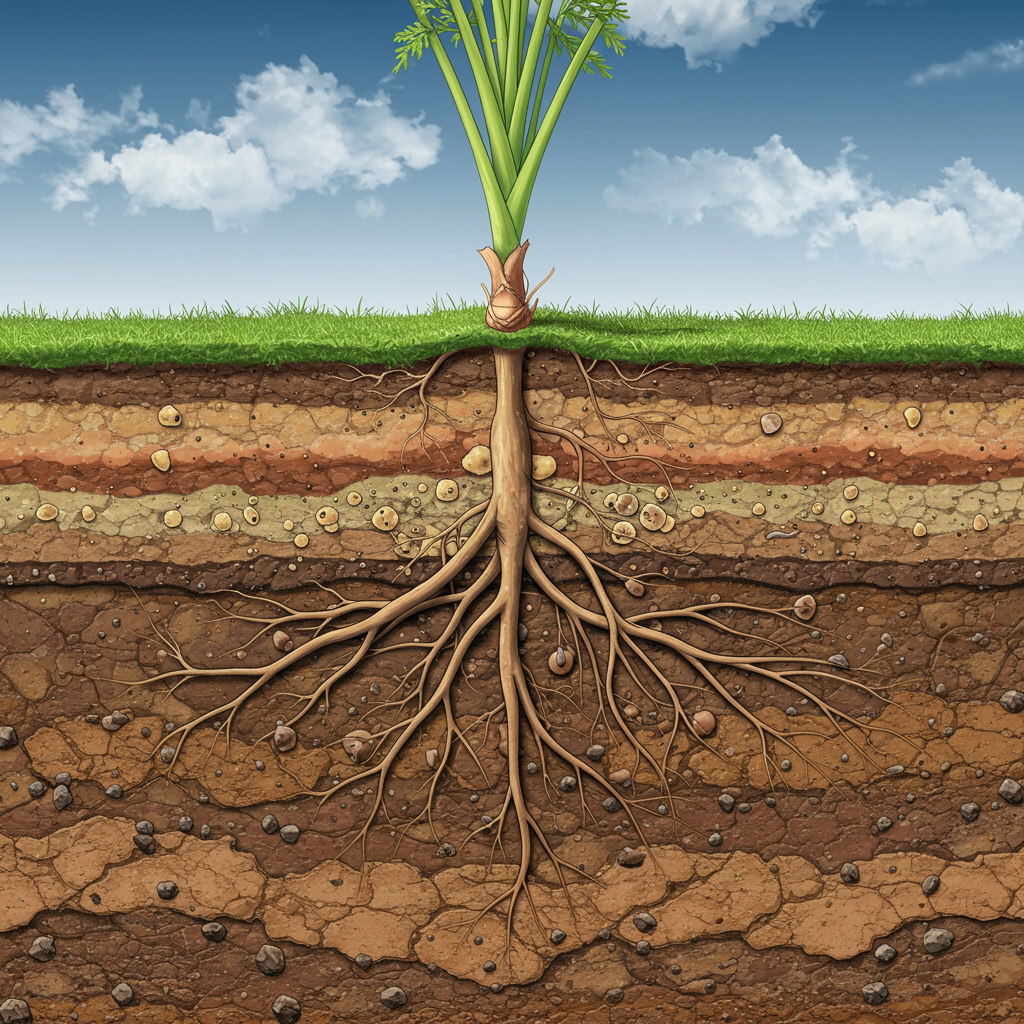For decades, scientists largely assumed that plant roots simply grew less abundant with increasing soil depth, following an exponential decay pattern. However, groundbreaking new research reveals a surprising reality beneath our feet: many plants develop a distinct second layer of roots far deeper underground than previously thought. This phenomenon, known as root bimodality, where root abundance peaks at two different depths, challenges long-held ecological models and has significant implications, particularly for understanding soil carbon storage.
A recent continental-scale analysis, leveraging unique deep-soil data from the National Ecological Observatory Network (NEON), uncovered this widespread pattern. Examining fine roots down to an unprecedented depth of 2 meters (about 6.5 feet) across 44 diverse sites from Alaskan tundra to Puerto Rican rainforests, researchers found that nearly 20% of the ecosystems studied exhibited this bimodal rooting distribution.
Deeper Than Expected: Uncovering the Second Root Layer
Crucially, the secondary root peaks observed in these bimodal sites were not just slightly below the surface. They were found deep underground, often exceeding 60 centimeters (about 2 feet), with a significant portion appearing deeper than 1 meter (over 3 feet). This underscores why this pattern has been overlooked by traditional ecological studies, which typically sample only to about 30 centimeters or, at most, 1 meter.
This discovery fundamentally changes our understanding of how plants explore the soil. Instead of a simple top-down approach, plants in certain conditions invest heavily in a deep root system.
Why Do Some Plants Go So Deep? The Nitrogen Connection
What drives this deep rooting behavior? The study explored various factors and found a strong association: the secondary root peaks often coincided with layers of soil rich in nitrogen. This suggests that plants may be growing these deeper roots specifically to forage for essential nutrients like nitrogen that are less available or harder to access closer to the surface.
While other factors like water availability or different nutrients might also play a role at specific sites, the consistent link with deep nitrogen highlights the importance of nutrient acquisition as a potential driver for this surprising deep root growth. This contrasts with unimodal sites, where nutrients generally became relatively more abundant compared to root biomass at depth, suggesting they were underexploited.
Interestingly, sites exhibiting bimodality also tended to have lower total fine root biomass overall compared to unimodal sites. This counterintuitive finding suggests that perhaps in ecosystems where overall root mass is lower, plants prioritize accessing deeper resources as a strategy.
Implications for Carbon Storage and the Terrestrial Carbon Sink
The existence of these significant, deep root systems has profound implications for the terrestrial carbon sink. Plants absorb vast amounts of carbon dioxide from the atmosphere during photosynthesis. Some of this carbon is transported belowground and allocated to roots.
The presence of roots much deeper than previously recognized means that carbon is being actively moved and potentially stored at greater depths. Storing carbon deeper in the soil profile is considered potentially safer and longer-term. This is because the harsher environmental conditions at depth – such as lower oxygen levels – tend to inhibit the microbial activity that breaks down organic matter and releases carbon back into the atmosphere.
Current ecological observations and models, often limited to shallow soil depths, may have significantly underestimated this natural mechanism for deep soil carbon storage. Researchers note that our “mole vision” below ground has lagged far behind our “eagle vision” from satellites observing aboveground processes.
This finding is particularly relevant in the context of global environmental change. As atmospheric CO2 concentrations rise, plants often face increasing nutrient limitations. The ability of plants to develop deep root systems to access previously under-exploited deep nutrient pools could be a crucial mechanism allowing them to sustain growth and continue absorbing carbon, potentially helping to mitigate the feared saturation of the land carbon sink.
A Call to Dig Deeper
The discovery of widespread root bimodality underscores the need for increased research attention on the “deep frontier” of soil ecology. Understanding the dynamics and phenomena occurring in deep soil layers is critical for accurately modeling ecosystem nutrient cycles, predicting plant responses to environmental change, and estimating the future trajectory of the land carbon sink. This research revises fundamental understandings of plant resource strategies and their potential resilience, highlighting that plants might be more actively contributing to natural climate mitigation than previously known.




